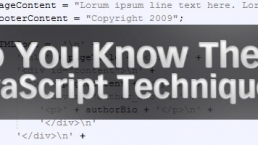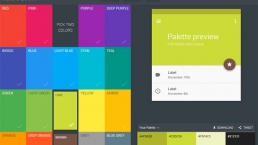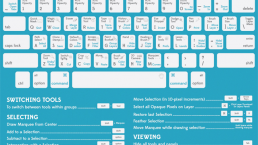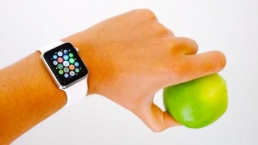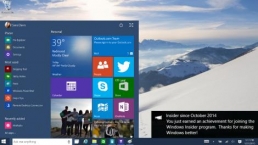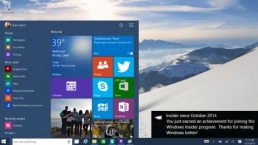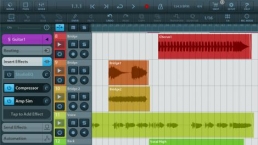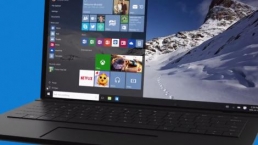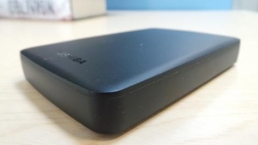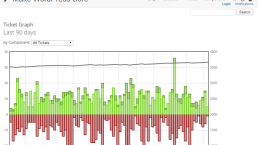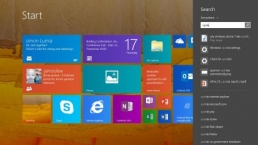
Introduction and features
There are some great compact system or mirrorless cameras around at the moment, but with its solid build, retro SLR-like styling, traditional controls and excellent image quality the Fuji X-T1 is one of our favourites. We’re not alone in this, as it’s also proved very popular with enthusiasts and professional photographers looking for a smaller (and funkier) alternative to an SLR.
Now we have the Fuji X-T10, a slightly more compact mini-me of the X-T1 that uses the same APS-C format 16Mp X Trans CMOS II sensor and EXR Processor, also found in the Fuji X-E2 and Fuji X100T. This sensor also houses phase detection autofocusing points that make up part of the camera’s hybrid AF system, which Fuji claims has a focus time of just 0.06 seconds.
Cut-down size… and features?
Being a little smaller and more affordable than the X-T1, the X-T10 naturally makes a few compromises. One of these is with the electronic viewfinder (EVF), so although the X-T10’s viewfinder has the same 2.36-million dot resolution as the X-T1’s, it’s the smaller (0.39-inch) device that’s found in the Fuji X-E2, with 0.62x magnification rather than 0.77x. The smaller size of this EVF means it’s not possible to see a dual image, with a magnified view alongside the full image, as it is with the X-T1. However, like the X-T1’s EVF, the X-T10’s has lag time of just 0.005 seconds, rather than the 0.05 seconds of the others.

Unlike the X-E2 and X-T1, however, the 3-inch screen on the back of the X-T10 has 920,000 dots where the older cameras’ screens have 1,040,000. As on the X-T1, though, the X-T10’s screen is mounted on a tilting bracket to make it easier to see when shooting landscape images above or below head height.
One area where Fuji hasn’t compromised, however, is with the X-T10’s autofocus system, as it includes the updates that were recently announced for the X-T1. In single AF (AF-S) mode there are three options for setting the focus point: Single, Zone and Wide; and in continuous AF (C-AF) mode there are Single, Zone and Wide/Tracking options. In Wide/Tracking mode the camera selects the autofocus point automatically and in Continuous AF mode it then tracks the subject around the frame, switching AF point and adjusting focus distance as it moves.

Other specification highlights of the X-T10 include a pop-up flash in addition to a hotshoe; a native sensitivity range of ISO 200-6400 with JPEG-only expansion settings taking this to ISO 100-51,200; a UHS-I SD/SDHC/SDXC card slot (the X-T1 has a UHS-II slot); a maximum continuous shooting rate of 8fps for eight images; Wi-Fi connectivity; and the same electronic shutter as in the X100T and X-T1, giving shutter speeds up to 1/32,000 sec. To help less experienced photographers, there’s also a fully automatic mode.
Build and handling
While it doesn’t have the weather resistant build of the X-T1, like other X-series CSCs the X-T10 is still very nicely put together with a pleasantly solid, die-cast magnesium alloy construction. It looks and feels like a high-quality piece of kit, and a proper member of the X-series family.
From the front and rear the X-T10 doesn’t look much smaller than the X-T1. From above, however, it’s clear that the new camera is quite a bit slimmer. Fuji lists the X-T10’s dimensions as 118.4 x 82.8 x 40.8mm, or 4.7 x 3.3 x 1.6 inches, with a minimum depth of 31.9mm or 1.3 inches, whereas the X-T1 measurements are given as 129.0 x 89.8 x 46.7mm, or 5.0 x 3.5 x 1.8 inches, and a minimum depth of 33.4mm or 1.3 inches. The X-T10 also weighs 331g/11.7oz (body only), while the X-T1 is 390g /13.7oz.

The front and rear grips are also less pronounced, but thanks in part to their super-grippy covering, they still work very well and the camera feels safe and comfortable in your hand. I carried it by the grip for a couple of hours or so with the Fujinon XF50-140mm f/2.8 R LM OIS WR lens mounted and it felt secure, if a little front-heavy.
Like the X-T1, the X-T10 has traditional exposure controls, but there aren’t as many dials on the top of the new camera. On the right there’s the exposure compensation dial with settings running from -2 to +2EV, the power switch surrounding the shutter release and the shutter speed dial with settings running from 1 to 1/4000 sec plus Bulb, Time and Automatic.

Over on the left of the top-plate, where the X-T1 has a dial to set sensitivity, is a drive mode dial. In addition to providing a means of setting the camera to Single, Continuous Low (speed) and Continuous High (speed) shooting (up to eight frames per second) this has options for accessing the bracketing, Advanced Filter (there are two settings for this), Multiple exposure and Panorama modes. There are two bracketing options, one for exposure bracketing and another for Film Simulation bracketing, enabling you to produce a sequence of three images with different exposures or different Film Simulation settings.
ISO options
There’s no sensitivity dial on the X-T10, but there are a number of ways of selecting the ISO setting you want. The first option is via the main menu, but there’s also the Quick menu that’s accessed by pressing the Q button. Alternatively, one of the physical controls can be customised to access sensitivity values. The front dial, which by default is used to access the autofocus options, could be a good choice – pressing this dial brings up the available settings, and it can then be rotated to select the correct value. A third option is to allow the sensitivity to be set automatically by the camera. I find this a very good option, as you can set a default value as well as a maximum sensitivity and minimum shutter speed, so you can be confident images won’t be too noisy or suffer from camera shake.
The rear dial can also be pressed as well as rotated, and is used to zoom into the selected focus point or magnify images in review mode. Unusually for this camera, this dial is not customisable, but there are plenty of other customisable controls.
A small switch protruding from underneath the drive mode dial is provided to pop-up the built-in flash. This little flash seems tougher than the flimsy devices on some cameras, and its pop-up spring is quite strong.
Shutter speed and aperture control
When a lens with an aperture ring is mounted on the X-T10, aperture is set either manually, by selecting a value using the ring, or automatically by the camera when the ring is set to A. Shutter speed is set via the shutter speed dial. If both the aperture ring and shutter speed dial are set to A the camera operates in Program mode. If only one is set to A, the camera is in aperture priority or shutter priority mode. For example, if the shutter speed dial is set to 1/60th and the aperture ring is on A, the camera is in shutter priority mode and will set the aperture automatically.

To help less experienced photographers, or when speed is of the essence, Fuji has given the X-T10 a switch that enables users to override the exposure settings and set the camera to fully-automatic mode. This switch sticks out from under the shutter speed dial – it’s near the power switch, but it’s unlikely that the two could be confused.
Although the electronic viewfinder (EVF) is noticeably smaller than the X-T1’s, it is still very good. When the camera is set to the Provia/Standard Film Simulation mode, there’s a very slight boost in contrast and saturation in comparison with the scene that we expect to see with this setting. Details are clear, and there’s no obvious texture in good lighting conditions. In low light some noise becomes apparent, but it’s not objectionable.
I found that I was able to follow the movement of fast-moving cyclists in the EVF when shooting continuously, indicating that the refresh rate is sufficiently high.

The 3-inch screen is also very good, displaying plenty of detail in all but very bright light, when reflections make the EVF a better option for composing images. The fact that the screen tilts up or down is useful for composing landscape shots from high or low angles, but it doesn’t help with upright shots. Because the EVF eye cup extends a little beyond the back of the camera, the screen can’t be tilted completely upright for viewing from in front to help with selfies, but you can always connect the camera to your smartphone and use Fuji’s app to control it remotely to get a self-portrait.
Focus options
When shooting in Single shot or Continuous Low shooting mode and Zone AF mode, the X-T10 has 77 user-selectable autofocus points (rather than the 49 available in Single AF mode), which can be selected in groups of 3×3, 3×5 or 5×5. When Continuous High shooting mode is selected the number of AF points drops to 15 around the centre of the frame, and the zone can bet set to the whole area or a 3×3 square.
By default the AF point selection mode is activated by pressing the down key of the navigation controls on the back of the camera, and the size of the AF zone is adjusted using the front or rear command dial above the thumb and finger grips. The location is shifted via the navigation controls.
In Continuous AF Zone AF mode the camera focuses on the subject within the selected zone, and switches between AF points within the zone as the subject moves. In Wide/Tracking mode the active AF point(s) move across the whole frame (or across the central group in Continuous High shooting mode) as the subject moves, turning green as they become active.
Performance
The X-T10 has the same X Trans CMOS II sensor and processing engine as the Fuji X-T1, so the quality of the images from the new camera doesn’t come as much of a surprise. It’s capable of capturing an impressive level of detail, especially for a 16Mp camera. That’s thanks in part to the sensor design, which doesn’t require an anti-aliasing filter to avoid moire interference.
Noise is also controlled well throughout the native sensitivity range, and even at the maximum setting (ISO 6,400) images retain a high level of detail. JPEG files recorded at this setting have an even texture of luminance noise visible at 100%, but they still look good and there’s enough detail present to produce nice A3 (11.7 x 16.6inch) prints. As usual raw files have some chroma noise, but this can be controlled easily, enabling you to find a good balance between noise and detail.

The JPEGs captured at the lowest expansion setting, ISO 12,800, are pretty good, and even ISO 25,600 produces reasonable results, but I would avoid using the maximum setting unless it’s vital to get an image, as there’s noticeable softening at normal viewing or printing sizes.

Like the X-T1, the X-T10 produces very attractive images in a wide range of situations. Fuji is widely respected for its colour reproduction, and the Film Simulation modes are very popular. My favourite is Classic Chrome, which produces quite muted colours with a warm tone, but the standard option, Provia is a good all-rounder, while Velvia is great for creating images with more saturation. This is backed up by an auto white balance system that performs well in most natural lighting situations, although images shot in very overcast or shaded conditions can look a little cool.
Improved autofocus
A key criticism of previous X-series compact system cameras has been the autofocus performance with moving subjects. The autofocus system improvements brought by the X-T10, and being rolled out to the X-T1 with a firmware upgrade, are designed to address the issue – and there’s a vast improvement. In Continuous Autofocus mode it’s now possible to select points, or zones around the frame and the camera will track the subject within the zone or around the frame. The greatest flexibility comes when shooting in Single-shot or Continuous Low mode, but even in Continuous High mode it’s possible to choose between nine individual points or, as outlined in Build and Handling, move the zone across 15 points.

In Continuous Wide/Tracking mode the AF does a reasonable job of locking onto a moving subject and tracking it around the frame, but busy surroundings can be a distraction, so Zone AF or Single point mode is often a better option. Provided the active zone or single point is kept over the subject the camera does a good job, delivering sharp images on most occasions even in subdued light. I found I was able to get consistently sharp images of cyclists competing in a triathlon on a bright sunny day, and of skateboarders on an overcast day in covered area.

It would be nice if the focusing points could extend a little further out from the centre of the frame when shooting at the X-T10’s maximum rate (8fps), but it’s not a major issue in many situations.
In Single AF mode the X-T10 snaps the subject quickly into sharp focus. It’s also helpful that, as in the new Fuji X-A2, the new Auto Macro function automatically activates Macro mode when close subjects are detected, so there’s no need for a macro button.
Like other Fuji X-series compact system cameras, the X-T10 tends to produce JPEG images with quite high mid-tone contrast. This makes the images look sharp, vibrant and film-like, but their dynamic range isn’t especially high. The general purpose Multi-zone metering system is also a little prone to producing quite bright images, so it’s a good idea to keep an eye on the histogram to make sure brighter areas aren’t lost. Some highlight detail is usually recoverable from raw files, but you still need to take care.
Lab tests: Resolution
We chose three rival cameras to the X-T10 to see how it measured up in our lab tests: the Panasonic G7, Olympus OM-D E-M10 and Sony A6000.
We’ve carried out lab tests on the X-T10 across its full ISO range for resolution, noise (including signal to noise ratio) and dynamic range. We test the JPEGs shot by the camera, but we also check the performance with raw files. Most enthusiasts and pros prefer to shoot raw, and the results can often be quite different.
Fuji X-T10 Resolution charts
We test camera resolution using an industry-standard ISO test chart that allows precise visual comparisons. This gives us numerical values for resolution in line widths/picture height, and you can see how the 5DS compares with its rivals in the charts below.
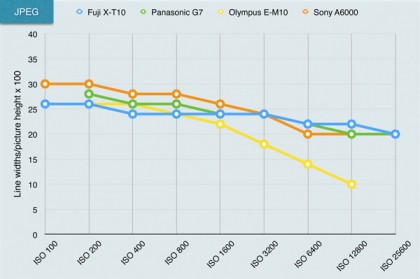
JPEG resolution analysis: While the X-T10 produces images that have an impression of lots of detail, at the lower sensitivity settings it struggles to match the resolution scores of the Panasonic G7, which has a smaller (Four Thirds type) sensor.

Raw (converted to TIFF) resolution analysis: The X-T10’s raw files (after conversion to TIFF) match the JPEGs for detail resolution, and lag a little behind the G7 at low to mid sensitivity settings. As we would expect, though the X-T10 scores well for a 16Mp camera, it can’t match the 24Mp Sony A6000.
Lab tests: Dynamic range
Dynamic range is a measure of the range of tones the sensor can capture. Cameras with low dynamic range will often show ‘blown’ highlights or blocked-in shadows. This test is carried out in controlled conditions using DxO hardware and analysis tools.

Dynamic range is measured in exposure values (EV). The higher the number the wider the range of brightness levels the camera can capture. This falls off with increasing ISO settings because the camera is having to amplify a weaker signal. Raw files capture a higher dynamic range because the image data is unprocessed.
Fuji X-T10 dynamic range charts

JPEG dynamic range analysis: As we have seen before with Fuji X-series cameras, the X-T10 produces files that have a compressed dynamic range. While this makes them look good, with pleasant mid-tone contrast and enhanced detail, they don’t score especially well in this test. You also need to keep an eye open for lost highlights in some situations.

Raw (converted to TIFF) dynamic range analysis: The X-T10’s raw files have a much wider range of tones than the JPEGs, giving greater scope for adjustment of contrast.
Lab tests: signal to noise ratio
This is a test of the camera’s noise levels. The higher the signal to noise ratio, the greater the difference in strength between the real image data and random background noise, so the ‘cleaner’ the image will look. The higher the signal to noise ratio, the better.
Fuji X-T10 signal to noise ratio charts

JPEG signal to noise ratio analysis: These results indicate that the X-T10 controls noise well, especially at the higher sensitivity settings. It also beats the competition at the lowest settings.

Raw (converted to TIFF) signal to noise ratio analysis: Like the X-T1 which has the same sensor, when raw files are processed using the supplied SilkyPix software they achieve a relatively low score for signal to noise ratio – although it still beats the A6000. This indicates that the files are noisier than those from most of the competing cameras.
Verdict
The big challenge for manufacturers when introducing a camera beneath an existing model is to give the new model appeal without wiping out the attraction of the original camera, and we think Fuji has done a remarkably good job with the X-T10. Its price is attractive, and significantly lower than the current street price of the X-T1, yet the overall build and feel of the new camera is very similar.
Apart from the price, the main differences between the X-T10 and the X-T1 are the lack of weatherproofing, the smaller electronic viewfinder and the loss of the sensitivity dial. As the traditional exposure controls are still present, along with many of the features of the X-T1 (not least the sensor and processing engines), there’s still plenty to offer enthusiast photographers. Meanwhile novices get a bit more help, with a more obvious route to the drive modes and a fully automatic override switch that puts the camera in control of exposure, white balance and colour.
We liked
Although it doesn’t have the weatherproof sealing of the X-T1, the X-T10 feels great in your hand and has all the most important controls within easy reach. As well as enabling quick adjustments to be made, the dials on the top plate enable you to check the setting at a glance without even turning the camera on. Novices will especially appreciate the switch that enables the camera to take control over the settings.
The new autofocus system is a significant improvement on what went before for anyone interested in shooting moving subjects. Helpfully, this is combined with an excellent electronic viewfinder that has a refresh rate that’s high enough to allow fast moving subjects to be followed.
In addition to the useful Quick Menu that enables you to access and change settings quickly, many of the buttons on the camera can be customised to reach the features you use most often.
We disliked
There’s a lot to like about the X-T10, but there are a few areas that could be improved. The sensitivity expansion settings and Advanced Filter options, for example, are JPEG-only. It’s unusual to have ISO 200 as the lowest sensitivity setting for shooting raw files, and it would be nice to be able to apply bespoke noise reduction when processing high-expansion setting raw files. It would also be nice to be able to record a clean raw file when using the Advanced Filter effects.
Fuji’s Quick menu system is very good, but it would be better if it were possible to customise it to access only the options you want. I’m pretty sure Fuji is working on this, so perhaps we’ll see it introduced with a firmware upgrade in the near future. A touchscreen, preferably a vari-angle unit to make it more useful when shooting upright images, would make the Quick menu even quicker to use.
Verdict
The X-T10 is a great camera for those wanting to get more serious about their photography, but it’s also a good choice for more experienced photographers and those looking for a backup to their X-T1. Although it is a compromise on the X-T1, it doesn’t feel like much of one, and it produces the same high-quality images. In addition, the autofocus system has taken a big step forward, making it much easier to shoot moving subjects.
![]()
Related Posts
December 6, 2021
7+ Web Design Trends for 2022: Which Will You Use?
December 6, 2021
The 10 Best WordPress Booking Plugins to Use On Your Website
December 6, 2021
How to Use a Web Cache Viewer to View a Cached Page
November 6, 2021
10 Modern Web Design Trends for 2022
November 6, 2021
Best Free SSL Certificate Providers (+ How to Get Started)
November 6, 2021
How to Design a Landing Page That Sends Conversions Skyrocketing
November 6, 2021
What Are the Best WordPress Security Plugins for your Website?
October 6, 2021
Your Guide to How to Buy a Domain Name
October 6, 2021
How to Build a WordPress Website: 9 Steps to Build Your Site
September 6, 2021
10 Best Websites for Downloading Free PSD Files
September 6, 2021
HTML5 Template: A Basic Code Template to Start Your Next Project
September 6, 2021
How Much Does It Cost to Build a Website for a Small Business?
September 6, 2021
A List of Free Public CDNs for Web Developers
September 6, 2021
6 Advanced JavaScript Concepts You Should Know
August 6, 2021
10 Simple Tips for Launching a Website
August 6, 2021
25 Beautiful Examples of “Coming Soon” Pages
August 6, 2021
10 Useful Responsive Design Testing Tools
August 6, 2021
Best-Converting Shopify Themes: 4 Best Shopify Themes
July 6, 2021
What Is Alt Text and Why Should You Use It?
July 6, 2021
24 Must-Know Graphic Design Terms
June 6, 2021
How to Design a Product Page: 6 Pro Design Tips
April 6, 2021
A Beginner’s Guide to Competitor Website Analysis
April 6, 2021
6 BigCommerce Design Tips For Big Ecommerce Results
April 6, 2021
Is WordPress Good for Ecommerce? [Pros and Cons]
March 6, 2021
Make Websites Mobile-Friendly: 5 Astounding Tips
March 6, 2021
Shopify vs. Magento: Which Platform Should I Use?
March 6, 2021
Top 5 Web Design Tools & Software Applications
February 6, 2021
Website Optimization Checklist: Your Go-To Guide to SEO
February 6, 2021
5 UX Design Trends to Dazzle Users in 2021
February 6, 2021
What Is the Average Page Load Time and How Can You Do Better?
February 6, 2021
Choosing an Ecommerce Platform That Will Wow Customers
February 6, 2021
7 Best Practices for Crafting Landing Pages with Forms
February 6, 2021
7 B2B Web Design Tips to Craft an Eye-Catching Website
January 6, 2021
Mobile-Friendly Checker | Check Your Site’s Mobile Score Now
January 6, 2021
8 Tips for Developing a Fantastic Mobile-Friendly Website
December 6, 2020
How to Add an Online Store to Your Website [4 Ways]
December 6, 2020
5 UX Design Tips for Seamless Online Shopping
November 6, 2020
Ecommerce Website Essentials: Does Your Site Have All 11?
November 6, 2020
5 Small Business Website Essentials You Need for Your Site
November 6, 2020
Your Website Redesign Checklist for 2020: 7 Steps for Success
May 1, 2020
Psychology of Color [Infographic]
April 21, 2020
How to start an online store that drives huge sales
January 3, 2020
5 Lead Generation Website Design Best Practices
March 6, 2019
6 Reasons You Should Redesign Your Website in 2019
March 6, 2019
7 Web Design Trends for 2019
February 19, 2019
Who owns the website/app source code, client or developer
February 7, 2019
Don’t Let Your Domain Names Expire in 2019
January 8, 2019
2019 Website Development Trends To Note
October 6, 2017
How Web Design Impacts Content Marketing
October 6, 2017
How to Choose a Navigation Setup
August 6, 2017
Why User Experience Matters to Marketing
July 6, 2017
5 Ways Web Design Impacts Customer Experience
September 6, 2016
How to Learn Angular
September 6, 2016
The Excuses for Not Having a Website (Infographic)
September 6, 2016
How to Build an Award-Winning Web Design Team
September 6, 2016
13 Free Data Visualization Tools
August 6, 2016
How Selling Pastries Helped Us Design a Better Product
August 6, 2016
11 Sites to Help You Find Material Design Inspiration
July 4, 2016
How to change free wordpress.com url
April 6, 2016
The 5 Best Free FTP Clients
April 6, 2016
7 Free UX E-Books Worth Reading
March 6, 2016
Can Handwritten Letters Get You More Clients?
December 10, 2015
Star Wars Week: How to create your own Star Wars effects for free
December 6, 2015
20 "Coming Soon" Pages for Inspiration
December 6, 2015
6 Free Tools for Creating Your Own Icon Font
December 6, 2015
9 Useful Tools for Creating Material Design Color Palettes
November 6, 2015
20 Free UI Kits to Download
November 6, 2015
50 Web Designs with Awesome Typography
November 6, 2015
When to Use rel="nofollow"
November 6, 2015
7 Free Books That Will Help You Become More Productive
November 6, 2015
50 Beautiful One-Page Websites for Inspiration
November 6, 2015
Circular Images with CSS
October 6, 2015
Lessons Learned from an Unsuccessful Kickstarter
October 6, 2015
5 Games That Teach You How to Code
October 6, 2015
Cheatsheet: Photoshop Keyboard Shortcuts
October 6, 2015
An Easy Way to Create a Freelance Contract for Your Projects
October 6, 2015
50 Design Agency Websites for Inspiration
September 29, 2015
JB Hi-Fi shutting the book on ebooks
September 24, 2015
Opinion: Quick, Quickflix: It's time to give yourself the flick
September 24, 2015
New Star Wars 360-degree video is among first on Facebook
September 21, 2015
Apple purges malicious iPhone and iPad apps from App Store
September 12, 2015
Apple's new Live Photos feature will eat up your storage
September 12, 2015
The latest Windows 10 Mobile preview has been delayed
September 12, 2015
IBM buys StrongLoop to add Node.js development to its cloud
September 8, 2015
Fake Android porn app takes your photo, then holds it ransom
September 6, 2015
50 Restaurant Websites for Inspiration
September 6, 2015
Zero UI — The Future of Interfaces
September 6, 2015
50 Beautiful Websites with Big Background Images
September 6, 2015
Infographic: 69 Web Design Tips
September 6, 2015
Free Windows 10 Icons
September 2, 2015
Instagram turns itself into a genuine messaging service
August 11, 2015
In Depth: How Microsoft taught Cortana to be more human
August 11, 2015
Windows 10 price, news and features
August 11, 2015
Windows 10's broken update introduces endless reboot loop
August 11, 2015
Windows 10 races to 27m installs
August 11, 2015
Windows 10 IoT Core gets first public release
August 10, 2015
iOS Tips: How to backup iPhone to an external drive
August 10, 2015
Windows 8.1 RT finally getting Windows 10 Start Menu
August 10, 2015
How to use Windows Hello
August 10, 2015
Review: Moto Surround
August 10, 2015
Review: Moto G (2015)
August 9, 2015
8 of the best free VPN services
August 8, 2015
Use Firefox? Mozilla urges you update ASAP
August 7, 2015
Mac Tips: Apple Mail: How to remove the Favorites Bar
August 7, 2015
How to make the OS X dock appear faster
August 7, 2015
Review: BQ Aquaris E45 Ubuntu Edition
August 7, 2015
Review: Acer Liquid Jade Z
August 6, 2015
How to reinstall Linux
August 6, 2015
How to reinstall Windows
August 6, 2015
Updated: Apple Music: release date, price and features
August 6, 2015
Social News Websites for Front-End Developers
August 6, 2015
10 Free JavaScript Books
August 6, 2015
50 Beautiful Blog Designs
August 6, 2015
Animated SVG Pipes Effect
August 6, 2015
Launching Your First App
August 5, 2015
Windows 10 goes freemium with paid apps
August 5, 2015
Updated: Week 1 with Windows 10
August 5, 2015
Mac Tips: How to manage Safari notifications on Mac
August 5, 2015
Microsoft Sway may kill the PowerPoint presentation
August 4, 2015
Microsoft gives Outlook on the web a new look
August 4, 2015
Mac OS X vulnerable to new zero-day attack
August 4, 2015
Windows 10 users warned of two scams
August 4, 2015
Microsoft's Docs.com is now available to everyone
August 3, 2015
Mac Tips: How to edit the Favorites sidebar on Mac
August 3, 2015
Updated: Windows 10 price, news and features
July 29, 2015
Review: HP ProDesk 405 G2
July 29, 2015
Hands-on review: HP Elite x2 1011
July 29, 2015
Hands-on review: Updated: Windows 10 Mobile
July 29, 2015
Review: Updated: Nvidia Shield Android TV
July 28, 2015
LIVE: Windows 10 launch: Live Blog!
July 28, 2015
How to prepare for your upgrade to Windows 10
July 28, 2015
Review: Updated: Windows 10
July 28, 2015
Review: Updated: HP Pro Tablet 608
July 28, 2015
Review: Heat Genius
July 28, 2015
Hands-on review: Moto X Play
July 28, 2015
Hands-on review: Moto X Style
July 28, 2015
Hands-on review: Moto G (2015)
July 28, 2015
Review: 13-inch MacBook Air (early 2015)
July 28, 2015
Hands-on review: OnePlus 2
July 28, 2015
Review: LG 65EG960T 4K OLED
July 28, 2015
Mac Tips: How to share printers on Mac
July 27, 2015
Apple Music's arrival hasn't opened Pandora's box
July 26, 2015
Review: Garmin Swim
July 25, 2015
How to merge OS X contacts into an existing list
July 25, 2015
Hands-on review: UPDATED: ZTE Axon
July 24, 2015
Mac Tips: How to zoom in on a Mac
July 24, 2015
What Windows 10 means for the enterprise
July 24, 2015
Review: JBL Charge 2 Plus
July 24, 2015
Review: Acer Aspire S7
July 24, 2015
Review: Updated: Canon G3 X
July 24, 2015
Review: Updated: iPad Air 2
July 24, 2015
Review: Thinksound On1
July 24, 2015
Review: Asus Chromebook Flip
July 24, 2015
Review: Garmin Forerunner 225
July 23, 2015
Review: Garmin nuvi 68LM
July 23, 2015
Review: Samsung Galaxy S6 Active
July 23, 2015
Review: Bowers and Wilkins P5 Wireless
July 23, 2015
Review: Dell XPS 15 (2015)
July 21, 2015
Review: Fuji S9900W
July 21, 2015
Review: Updated: Fitbit Surge
July 21, 2015
Review: UE Roll
July 21, 2015
Hands-on review: Ubik Uno
July 20, 2015
Review: Samsung HW-J650
July 20, 2015
Updated: 40 best Android Wear smartwatch apps 2015
July 20, 2015
Review: Acer Chromebook C740 review
July 20, 2015
Review: Huawei Talkband B2
July 20, 2015
Review: Dell Venue 10 7000
July 20, 2015
Review: Intel Core i7-5775C
July 17, 2015
Mac Tips: How to delete locked files on Mac
July 17, 2015
Review: Pebble Time
July 16, 2015
Microsoft just made Windows XP even less secure
July 16, 2015
Windows 8.1 RT is getting an update this September
July 16, 2015
OS showdown: Windows 10 vs Windows 8.1 vs Windows 7
July 16, 2015
Review: Acer CB280HK
July 15, 2015
Windows 10 is ready for new laptops and PCs
July 15, 2015
Explained: How to take a screenshot in Windows
July 15, 2015
Office for Windows 10 appears in latest build
July 14, 2015
Review: ZTE Axon
July 14, 2015
Review: ViewSonic VP2780-4K
July 14, 2015
Hands-on review: SanDisk Connect Wireless Stick
July 14, 2015
Review: Oppo PM-3
July 14, 2015
Review: BT 11ac Dual-Band Wi-Fi Extender 1200
July 13, 2015
How to build an SEO strategy for your business
July 13, 2015
Review: Lenovo ThinkPad Yoga 15
July 13, 2015
Review: Audio-Technica ATH-MSR7
July 13, 2015
Review: Garmin NuviCam LMT-D
July 13, 2015
Review: Dell Inspiron 13 7000
July 13, 2015
Hands-on review: AstroPi SenseHAT
July 13, 2015
Hands-on review: EE Rook
July 13, 2015
Hands-on review: Updated: HTC Vive
July 12, 2015
Here's the ultimate software list for PC fanatics
July 10, 2015
How to use the new Photos app for Mac
July 10, 2015
Windows 10 Insider Preview Build 10166 available now
July 10, 2015
Splunk spends big on cybersecurity acquisition
July 10, 2015
Making Windows 10 apps just got a whole lot easier
July 10, 2015
Review: Lenovo LaVie Z 360
July 9, 2015
OS X El Capitan public beta available right now
July 9, 2015
Microsoft finally unveils Office 2016 for Mac
July 9, 2015
Review: Updated: Chromecast
July 9, 2015
Review: Updated: Tesco Hudl 2
July 9, 2015
Review: Lenovo ThinkPad E550
July 9, 2015
Review: Updated: Google Nexus 6
July 8, 2015
What you need to know about Windows Server 2016
July 7, 2015
Microsoft to hike enterprise cloud pricing
July 6, 2015
Hacking Team end up being totally 0wned
July 6, 2015
Review: HP Pro Slate 12
July 6, 2015
Review: Samsung 850 Pro 2TB
July 6, 2015
Review: Asus RT-AC87U
July 6, 2015
Review: Jawbone UP2
July 6, 2015
Reimagining the Web Design Process
July 6, 2015
50 Clean Websites for Inspiration
July 6, 2015
15 Free Books for People Who Code
July 6, 2015
Web Storage: A Primer
July 6, 2015
A Look at Some CSS Methodologies
July 3, 2015
6 Essential Mac Mouse and Trackpad Tips
July 2, 2015
How to install a third party keyboard on Android
July 2, 2015
Review: UPDATED: Asus Zenfone 2
July 2, 2015
Review: Alienware 13
July 2, 2015
Review: HP DeskJet 1010
July 1, 2015
5 issues we want Apple Music to fix
June 13, 2015
Cortana will get its own button on Windows 10 PCs
June 12, 2015
Windows 10 will come with universal Skype app
June 12, 2015
iPad music production: 18 Best apps and gear
June 12, 2015
Windows 10 all set for early enterprise struggle
June 12, 2015
Review: Garmin VIRB Elite
June 11, 2015
Review: Updated: Nvidia Shield Tablet
June 11, 2015
Review: Nokia Lumia 635
June 10, 2015
Microsoft brings more online tweaks to Office 365
June 10, 2015
Mac Tips: How to use Screen Sharing in Mac OS X
June 9, 2015
Hands-on review: Meizu M2 Note
June 9, 2015
Hands-on review: EE 4GEE Action Camera
June 9, 2015
Review: Toshiba 3TB Canvio external hard drive
June 9, 2015
Review: Olympus SH-2
June 8, 2015
Hands-on review: Updated: Apple CarPlay
June 8, 2015
UPDATED: iOS 9 release date, features and news
June 8, 2015
Review: Updated: Roku 2
June 8, 2015
Review: Updated: PlayStation Vue
June 8, 2015
Review: Dell PowerEdge R730
June 8, 2015
Review: Canon SX710 HS
June 7, 2015
UPDATED: iOS 9 release date, features and rumors
June 7, 2015
Review: Lenovo S20-30
June 6, 2015
Free Writing Icons
June 6, 2015
15 CSS Questions to Test Your Knowledge
June 6, 2015
The Best CSS Reset Stylesheets
June 6, 2015
How CSS Specificity Works
June 5, 2015
'Delay' is a new feature in Windows 10
June 5, 2015
Review: Beyerdynamic Custom One Pro Plus
June 5, 2015
Latest SEO Marketing tools
June 5, 2015
Review: Nvidia Shield Android TV
June 5, 2015
Review: Honor 4X
June 5, 2015
Review: In Depth: Oppo R5
June 3, 2015
Hands-on review: Huawei P8 Lite
June 3, 2015
How To: How to create eBooks on a Mac
June 3, 2015
Review: Updated: Tidal
June 3, 2015
Review: Canon 750D (Rebel T6i)
June 2, 2015
Review: Updated: Asus ZenWatch
June 2, 2015
Review: Alcatel OneTouch Idol 3
June 2, 2015
Review: Updated: Nokia Lumia 1520
June 2, 2015
Review: Updated: Yotaphone 2
June 2, 2015
Review: Updated: Nokia Lumia 625
June 2, 2015
Review: Creative Muvo Mini
June 1, 2015
Review: Acer TravelMate P645 (2015)
June 1, 2015
Hands-on review: Corsair Bulldog
May 29, 2015
In Depth: NetApp: a requiem
May 29, 2015
July is looking definite for Windows 10 release
May 29, 2015
Hands-on review: Google Photos
May 28, 2015
Mac Tips: The 16 best free GarageBand plugins
May 28, 2015
Review: Canon 760D (Rebel T6s)
May 27, 2015
Review: Lenovo Yoga 3 14
May 27, 2015
Hands-on review: Serif Affinity Photo
May 27, 2015
Review: Garmin Vivoactive
May 26, 2015
Review: Datacolor Spyder5 Elite
May 26, 2015
Hands-on review: Sony Xperia Z3+
May 26, 2015
Review: Epson BrightLink Pro 1410Wi
May 26, 2015
Review: Technics Premium C700
May 26, 2015
Review: Canon EOS M3
May 26, 2015
Review: Updated: HTC One M9
May 26, 2015
Review: Updated: Sony Xperia Z3 Compact
May 25, 2015
Review: Updated: New Nintendo 3DS
May 25, 2015
Updated: 50 best Mac tips, tricks and timesavers
May 25, 2015
Updated: Windows email: 5 best free clients
May 25, 2015
Instagram is planning to invade your inbox
May 25, 2015
Review: Updated: Foxtel Play
May 24, 2015
How Windows 10 will change smartphones forever
May 24, 2015
Review: Vodafone Smart Prime 6
May 24, 2015
Review: Updated: iPad mini
May 22, 2015
Office Now may be Cortana for your work life
May 22, 2015
Review: Updated: Lenovo Yoga 3 Pro
May 22, 2015
Review: Microsoft Lumia 640 LTE
May 22, 2015
Review: Updated: Fitbit Flex
May 21, 2015
Updated: Best free Android apps 2015
May 21, 2015
Review: Asus ZenBook Pro UX501
May 21, 2015
Review: Sennheiser Momentum In-Ear
May 20, 2015
Hands-on review: UPDATED: Asus Zenfone 2
May 20, 2015
OS X 10.11 release date, features and rumors
May 18, 2015
Updated: Best free antivirus software 2015
May 18, 2015
iPhone 6S rumored to launch as soon as August
May 18, 2015
Microsoft ready to pounce and acquire IFS?
May 17, 2015
5 of the most popular Linux gaming distros
May 16, 2015
Review: Acer Chromebook 15 C910
May 16, 2015
Review: Lenovo ThinkPad X1 Carbon (2015)
May 16, 2015
Review: Polk Nue Voe
May 16, 2015
The top 10 data breaches of the past 12 months
May 16, 2015
Hands-on review: Updated: LG G4
May 16, 2015
Review: Updated: Quickflix
May 16, 2015
Review: LG Watch Urbane
May 16, 2015
Review: Razer Nabu X
May 16, 2015
Hands-on review: Updated: Windows 10
May 16, 2015
Review: UPDATED: Moto X
May 16, 2015
Review: Updated: Moto G (2013)
May 12, 2015
Review: TomTom Go 50
May 12, 2015
Review: Updated: Moto G (2014)
May 12, 2015
Review: Garmin Vivofit 2
May 12, 2015
Review: Asus Transformer Book Flip TP300LA
May 11, 2015
Review: MSI GT80 Titan
May 11, 2015
Review: Monster SuperStar BackFloat
May 9, 2015
Review: Updated: Apple Watch
May 7, 2015
5 million internet users infected by adware
May 7, 2015
Review: Updated: New MacBook 2015
May 6, 2015
Android M will be shown at Google IO 2015
May 6, 2015
Review: Epson WorkForce Pro WF-4630
May 6, 2015
Review: Master & Dynamic MH40
May 6, 2015
How to Use Gulp
May 6, 2015
Getting Started with Command-Line Interfaces
May 6, 2015
What It’s Like to Contribute to WordPress
May 6, 2015
Ultimate Guide to Link Types for Hyperlinks
May 6, 2015
11 Things You Might Not Know About jQuery
May 5, 2015
Hands-on review: Updated: PlayStation Now
May 5, 2015
Review: Lenovo ThinkPad Yoga 12
May 5, 2015
Review: Updated: iPad Air
May 5, 2015
Review: Panasonic SZ10
May 5, 2015
Review: Updated: Fetch TV
May 4, 2015
Review: Cambridge Audio Go V2
May 3, 2015
Review: Lightroom CC/Lightroom 6
May 2, 2015
5 of the most popular Raspberry Pi distros
May 1, 2015
Review: PlayStation Vue
May 1, 2015
Hands-on review: Updated: Microsoft HoloLens
April 30, 2015
Build 2015: Why Windows 10 may not arrive until fall
April 29, 2015
The biggest announcements from Microsoft Build 2015
April 29, 2015
Hands-on review: TomTom Bandit
April 29, 2015
Hands-on review: EE Harrier Mini
April 28, 2015
Review: Samsung NX500
April 28, 2015
Hands-on review: LG G4
April 28, 2015
Review: Patriot Ignite 480GB SSD
April 28, 2015
Hands-on review: EE Harrier
April 28, 2015
Review: Linx 10
April 28, 2015
Review: 1&1 Cloud Server
April 26, 2015
Hands-on review: Acer Iconia One 8
April 25, 2015
How to run Windows on a Mac with Boot Camp
April 24, 2015
Dropbox Notes poised to challenge Google Docs at launch
April 24, 2015
Hands-on review: Acer Aspire E14
April 24, 2015
Hands-on review: UPDATED: Valve Steam Controller
April 24, 2015
Review: Acer Iconia One 7
April 23, 2015
Windows 10 just revived everyone's favorite PC game
April 23, 2015
Google opens up Chromebooks to competitors
April 23, 2015
Here's how Outlook 2016 looks on Windows 10
April 23, 2015
Hands-on review: Updated: Acer Liquid M220
April 23, 2015
Hands-on review: Acer Aspire Switch 10 (2015)
April 23, 2015
Hands-on review: Acer Aspire R 11
April 22, 2015
Review: Alienware 17 (2015)
April 22, 2015
Hands-on review: Updated: HP Pavilion 15 (2015)
April 21, 2015
This is how Windows 10 will arrive on your PC
April 21, 2015
Review: iMac with Retina 5K display
April 21, 2015
Review: Epson XP-420 All-in-One
April 18, 2015
Google Now brings better search to Chrome OS
April 17, 2015
Review: Epson Moverio BT-200
April 17, 2015
Review: Pentax K-S2
April 16, 2015
Updated: Android Lollipop 5.0 update: when can I get it?
April 15, 2015
Hands-on review: Updated: Huawei P8
April 15, 2015
Review: SanDisk Ultra Dual USB Drive 3.0
April 15, 2015
Review: Updated: LG G3
April 15, 2015
Review: Updated: LG G3
April 15, 2015
Review: Crucial BX100 1TB
April 13, 2015
iOS 8.4 beta reveals complete Music app overhaul
April 13, 2015
Linux 4.0: little fanfare for a tiny new release
April 13, 2015
Achievement unlocked: Microsoft gamifies Windows 10
April 13, 2015
Best Android Wear smartwatch apps 2015
April 13, 2015
Review: Acer Aspire R13
April 12, 2015
Review: TP-Link Archer D9
April 10, 2015
Microsoft's new browser arrives for Windows 10 phones
April 10, 2015
Review: LG UltraWide 34UC97
April 9, 2015
Office now integrates with Dropbox on the web
April 9, 2015
Now you can buy video games with Apple Pay
April 9, 2015
Updated: iOS 8 features and updates
April 9, 2015
Microsoft's stripped down Nano Server is on the way
April 8, 2015
Skype Translator gets even more features
April 8, 2015
Windows mail services hit by widespread outages
April 8, 2015
Review: UPDATED: Amazon Echo
April 8, 2015
Hands-on review: Dell Venue 10 7000
April 8, 2015
Review: Updated: OS X 10.10 Yosemite
April 7, 2015
Google's GMeet could kill teleconferencing
April 7, 2015
Is Redstone the first Windows 10 update?
April 7, 2015
Next peek at Windows Server 2016 due next month
April 7, 2015
Review: Acer Aspire Switch 11
April 7, 2015
Review: Adobe Document Cloud
April 6, 2015
Hands-on review: Updated: New MacBook 2015
April 6, 2015
Freebie: 100 Awesome App Icons
April 6, 2015
Six Revisions Quarterly Report #1
April 6, 2015
A Modern Approach to Improving Website Speed
April 6, 2015
Disable Text Selection with CSS
April 4, 2015
Review: Nikon D7200
April 3, 2015
Amazon Prime video now streams to any Android tablet
April 3, 2015
Review: Google Cardboard
April 3, 2015
Review: MSI WS60
April 2, 2015
Chrome users can now run 1.3 million Android apps
April 2, 2015
See Windows 10 Mobile running on an Android handset
April 2, 2015
Review: Mini review: Macphun Noiseless Pro 1.0
April 2, 2015
Review: Intel SSD 750 Series 1.2TB
April 2, 2015
Review: BenQ TreVolo
April 2, 2015
Hands-on review: Nikon 1 J5
April 1, 2015
Microsoft launches Windows 10 music and video apps
April 1, 2015
Review: mini review: Sony XBA-H1
December 19, 2014
Review: CoPilot Premium sat nav app
December 19, 2014

















